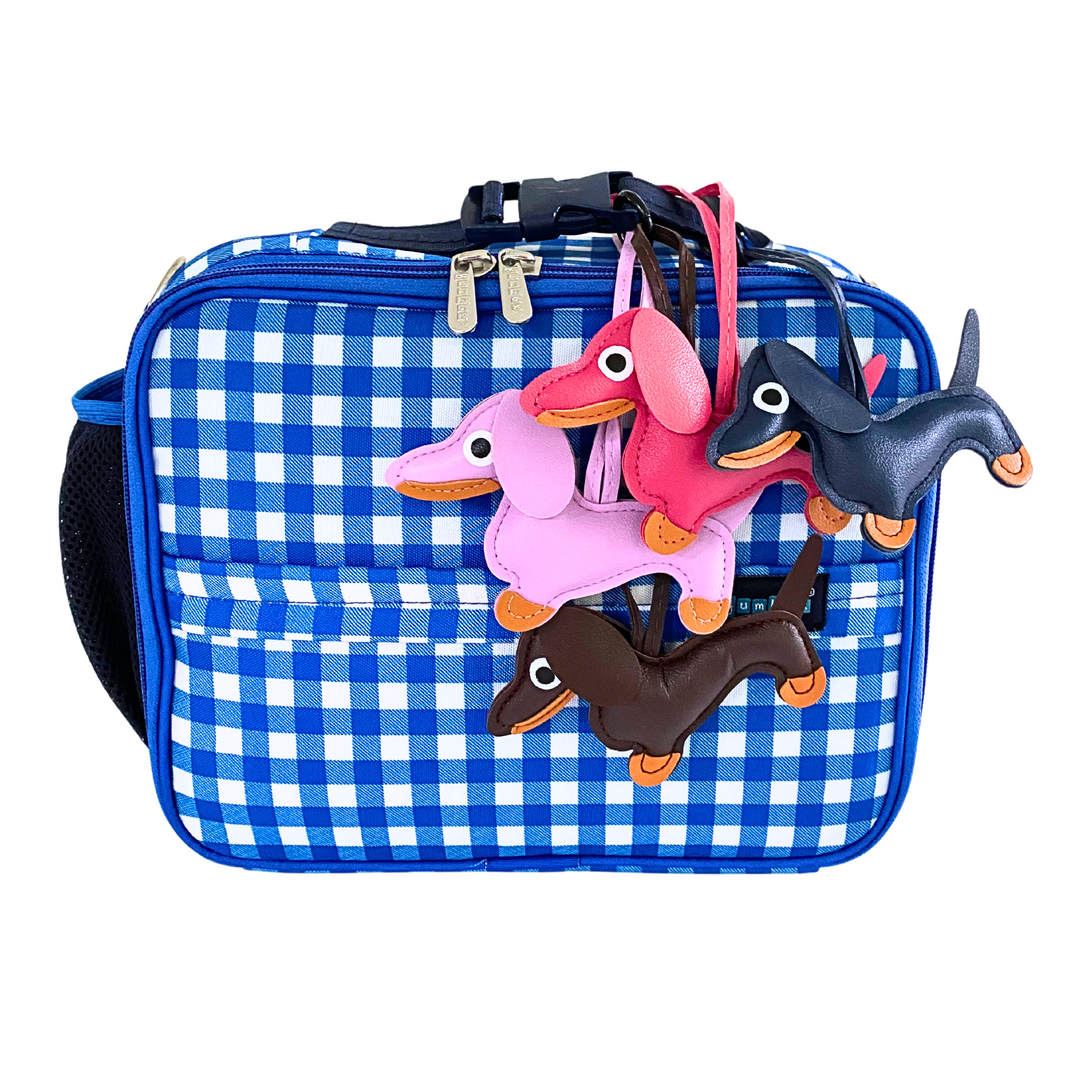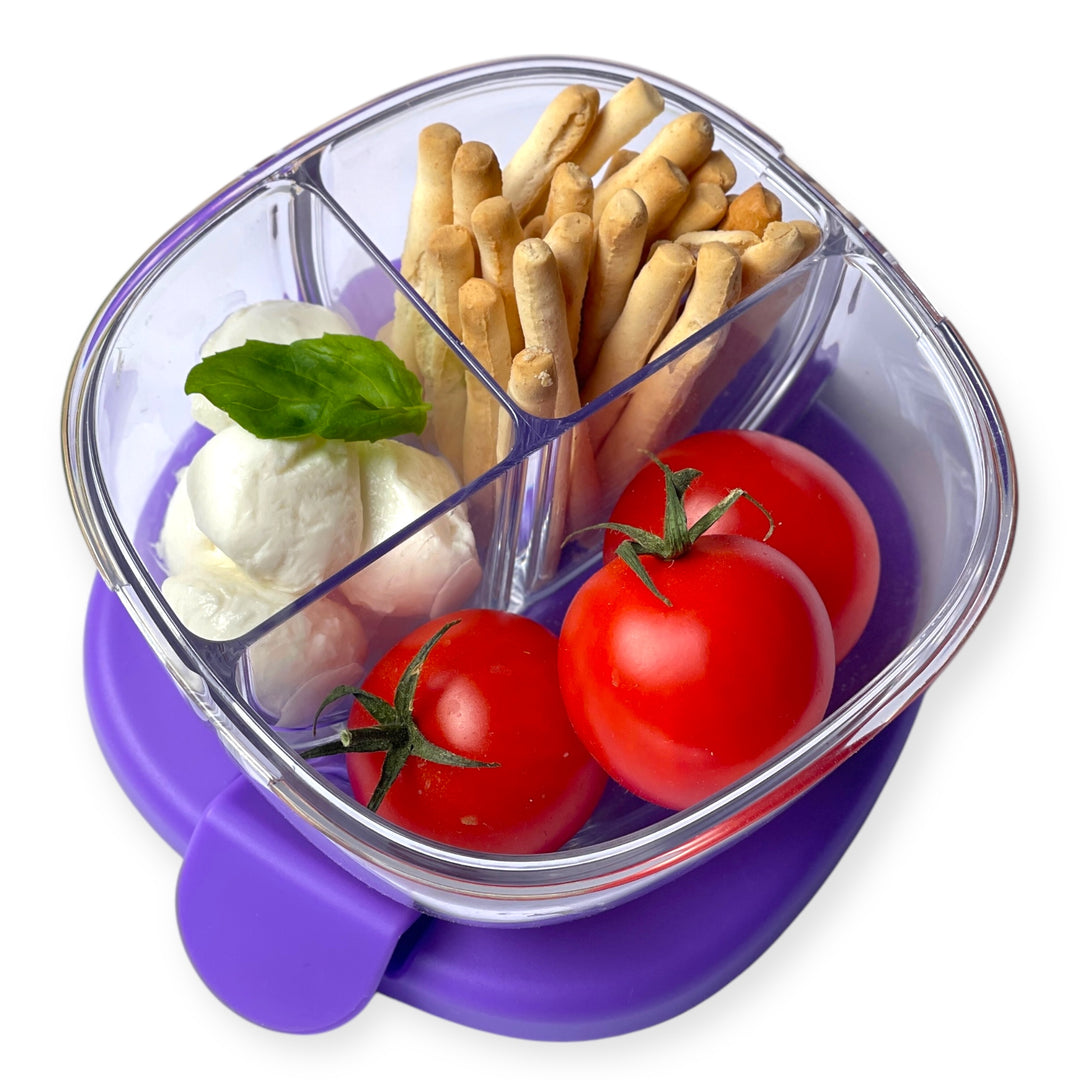Teaching Kids about Serving Sizes & Healthy Portions


Portion Sizes & Kids
So what are those mysterious portion sizes? The USDA’s Choose My Plate has a pretty user-friendly chart that simplifies the understanding of daily portion sizes, per food group and by age. The key thing to remember is that the recommended portion sizes are per day. Some people eat more in the afternoon rather than the evening. So developing a sensitivity and awareness to your family’s hunger patterns is important.
When you have young children it seems like they get hungry pretty often. And they actually do! Then again, their hunger is often satiated with a very small amount of food, and if you over-serve, much food is wasted on a daily basis. At Yumbox, we recommend offering them small servings of different food items in a container that could be easily stored away in a refrigerator for the next snack or meal serving. This gives you a better gauge of what they are eating on a daily basis, it prevents unnecessary food waste, and of course teaches your children to learn to appreciate balance and variety of foods.

Portion Sizes by Food Group for Young Kids
The following daily recommendations were sourced from Choose My Plate website.
Protein
2-3 years old: 2 ounces
4-8 years old: 4 ounces
It’s actually quite interesting to weigh your food for a while, to see what exactly you’re eating on a daily basis. I don’t know about you, but once we get down to ounces, I have a very hard time judging the portion sizes. So for starters, an ounce of protein is equal to 1 egg or ¼ cup of cooked beans or 1 tbsp of peanut butter or ½ ounce of nuts (that’s really a sprinkling of nuts!). You can see how quickly we manage to meet the protein group requirements!
Dairy
2-3 years old: 2 cups
4-8 years old: 2.5 cups
A cup of milk is equivalent to a cup of dairy. That’s pretty easy! However, some dairy foods, like hard cheese, are quite deceiving. Just a slice of hard cheese is the equivalent of ½ cup of dairy. Choose My Plate has very detailed Dairy daily recommendations and serving suggestions.
Grains
2-3 years old: 3 ounces
4-8 years old: 5 ounces
One ounce of grains is equivalent to the following: 1 slice of bread, 1 cup of ready to eat cereal, ½ cup of cooked rice or pasta. To put it in perspective, if you make a sandwich with two bread slices, that’s already almost half of the grain requirement for the whole day! On those days serve less grains at breakfast (substitute with yogurt or eggs) or break out the portions more equally across the meals and snacks.
Vegetable
2-3 years old: 1 cup
4-8 years old: 1.5 cups
To preserve all the amazing nutrients vegetables provide, try to serve many of them raw or just barely steamed. However, baked or roasted vegetables are also a great way to incorporate them into the daily diet. To get the portions right, a cup of cooked vegetables is actually equal to 2 cups of raw vegetables! A little confusing, but bear in mind that when leafy vegetables are cooked they decrease in volume. Yet a cup of cooked beans is always a cup. For little kids, 6 baby carrots is a great ½ cup vegetable serving.
Fruit
2-3 years old: 1 cup
4-8 years old: 1.5 cups
There are many different ways to incorporate fruit into your child’s daily diet. Fruits can be fresh and whole, or cut-up, frozen, pureed, dried or even incorporated into muffins. The fruit group portions are easy to measure. One cup is just one cup - just try to visualize the actual size of one cup. However, pay attention to dried fruit. Only ½ cup of dried fruit is equal to 1 cup. Those raisins your toddler is snacking on - they count towards the Fruit group requirements! Same goes for fresh fruit juice.

Yumbox & Portions
Yumbox’s tray was specifically designed to hold ½ cup food servings of each main food group. These portions work well for young children up to the age of 10. Yumbox encourages balance, variety and attractive presentation. However, as all children have their own eating patterns, it is important to recognize where your child stands in relation to their midday hunger. If your ten year old comes home starving and all their lunch and snack food has been eaten, it’s perhaps wise to reevaluate how much food you’re giving them. When children go through growth spurts, it’s important to satisfy their nutritional needs. For an older child, we strongly recommend packing a larger healthy snack. Some of our young adult Yumbox users have also written to tell us that they pack a Yumbox with healthy and wholesome foods and have a side of bread outside of the box. That sounds like a great idea!

Picky Eaters & Portion Sizes
As a mom of a picky eater, I understand that often parents don’t worry so much about kids over-eating, but under-eating, when they are little. Yet picky eaters present their own set of challenges. It takes some determination and willpower not to give in to their demands to eat only certain foods and not others, often compromising nutritional balance.
Portion sizes are quite important for everybody, especially picky eaters. Smaller portions of new foods or “detested” foods can be made more appealing with the right presentation. Their small quantity can also be less overwhelming to a picky eater and they might be more willing to give it a tiny first taste. As tempting as it is, it’s also important not to load up the plate with the one food that the picky eater likes (like pasta) to make sure that they eat “well enough.” This type of feeding will only ensure their prolonged pickiness. Giving them the only “liked” foods will definitely limit their openness to try new foods.
Portion Awareness for the Entire Family
Kids look up to the parents for eating cues and habits. If you want to encourage healthy eating habits to your kids, it’s important for the entire family to participate in eating a well balanced diet. The Nemours Foundation offers these great suggestions on how to make sure that you’re eating just the right portions:
1) Put meals on smaller plates so that the portion appears larger.
2) Divide snacks into small portions, instead of sending your child off to snack with the whole bag.
3) Separate leftovers into small portion sizes, instead of storing them in larger containers.
4) Serve food away from the table, which may limit family members from going back for seconds.
5) Produce single-serving foods to help your children visualize what an appropriate serving is.
6) Eat meals slowly, and make sure they contain plenty of fruits and vegetables.
7) Split orders at a restaurant.
8) Skip the plus-sized value meals at fast-food eateries.





Leave a comment